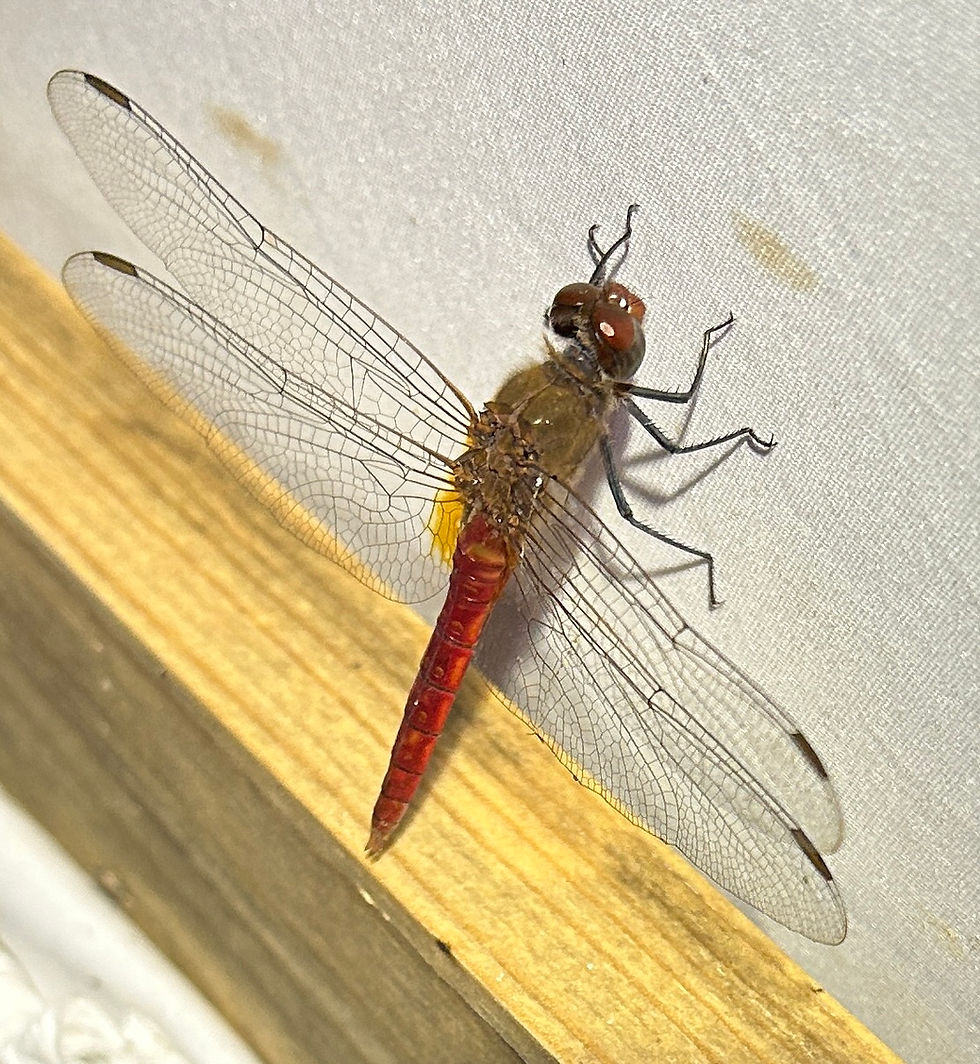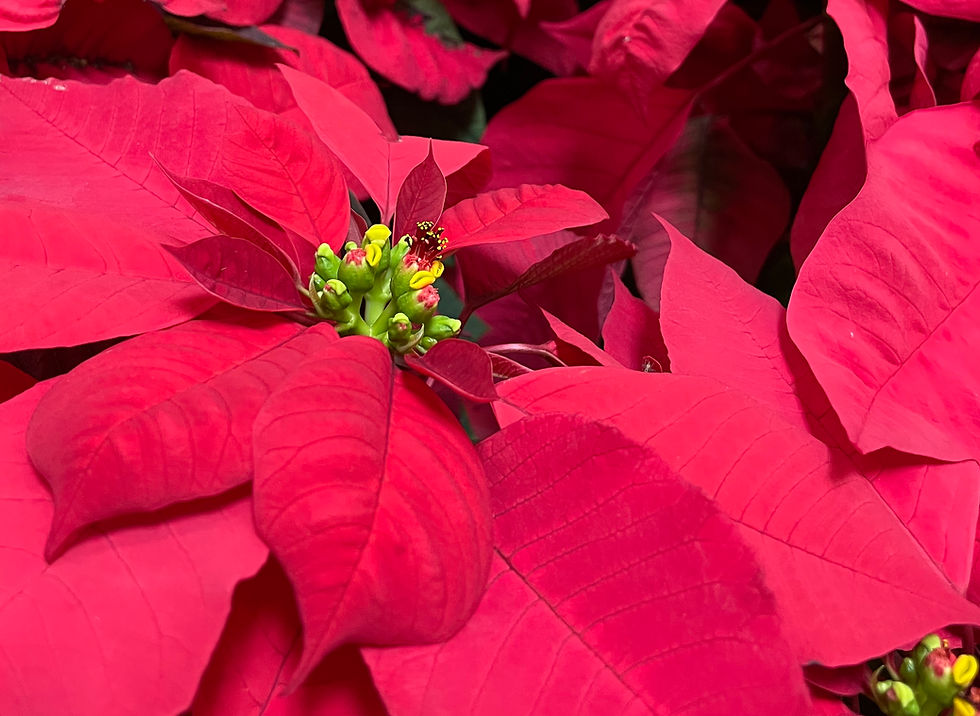Anita’s Blog – August Odolympics BioBlitz
- jjvanm
- Aug 14, 2025
- 4 min read

Another BioBlitz: The Odolympics 2025 – Saturday, August 16 to Sunday, August 24, 2025.
It’s another opportunity to earn volunteer hours and do field research as a citizen scientist.
The Dragonfly Society of the Americas is once again hosting the Odolympics in 2025!
Everyone can participate by entering observations into iNaturalist.org or Odonata Central
You can have fun and contribute to citizen science by helping to create a single year snapshot of Odonate distribution
Visit this link to join the iNaturalist.org BioBlitz: https://www.inaturalist.org/projects/odolympics-august-2025 Select “Join” at the green box. Next page, scroll down and click the blue box at the bottom of the page, “Yes I want to join.”
The goal is to record as many species from as many places as possible
Odonata is an insect order that encompasses dragonflies (Anisoptera) and damselflies (Zygoptera).


Odonata are ancient insects, with their evolutionary history dating back to the Carboniferous period (325 million years ago) – and still going strong!
Texas may have 250 different species of dragonflies and damselflies.
You may know dragonflies perch with their wings spread; damselflies rest with their wings closed above their abdomen.
Dragonflies and damselflies are colorful: Orange, green, yellow, black, brown, red and blue. Their aerial aerobatics are amazing as they zip around with flexibility and maneuverability like no other insect. They have interesting nomenclatures, like Pondhawks, Skimmers, Dashers, Gliders, Forceptails and Dragonlets.



Photographing the insects for a Bioblitz is a real challenge. Patience helps. So might a few tips:
Here’s what the photographer is up against: Dragonflies can move each of their four wings independently to flap up and down and rotate forward and backward, allowing dragonflies to fly up, down, backwards, sideways, hover like a helicopter and make hairpin turns in the blinking of an eye.
The wing gyrations aren’t the only challenge. Nearly all of a dragonfly’s head consists of two huge compound eyes that give it nearly 360-degree vision — consider approaching the insect directly from behind. Or use a camera with a telephoto lens. I use a 70-300 mm lens a lot. My 300-500 mm comes in handy. Dragon flies come to my moth sheet, too, where I can photograph them with my phone camera. I take a tip from our Webmaster, Joseph Connors, who says dragonflies are daytime insects. When he sees them on his moth sheet at night, he gently captures them and throws them to the darkness, where they can go somewhere and sleep until the sun comes up.

Here’s another tip, if you have the patience for it. As you probably already have witnessed, dragonflies rest mostly at the tip of something — twig, snag, top of tree, a lone stick stuck in the ground, windowsills, walls, or on the grass — really, anywhere.
Dragonflies rest a lot. It’s a time for them to recharge their body and brain. With this in mind, approach a resting dragonfly with camera or phone app at the ready. The dragonfly will fly away, of course, but stay where you are and have your camera focused on where the dragonfly was. The dragonfly more often than not will come back to the perch it was on before you caused it to flee – or very near it.

Dragonflies aren’t harmful to humans or the universe — quite the opposite. Their unique flight skills and remarkable vision help them quickly detect the movement of other insects. They eat on the fly and catch their prey by grabbing it with their feet. Their diet includes mosquitoes, flies, gnats, even butterflies and smaller dragonflies. A single dragonfly can eat hundreds of mosquitoes a day.
Even with such remarkable sight and flight proficiencies, Dragonflies are not without enemies. Birds and frogs eat dragonflies, and spider webs can imprison a dragonfly for a spider’s next meal.
A couple of years ago I was photographing for a bioblitz. Several small, quad-winged insects were hovering around the blooms on skeleton leaf golden eye, Viguiera stenoloba, shrubs. The insects were so small they could have fit on a quarter coin. Their most eye-catching trait was that their wings glowed a brilliant orange with a vibrancy enhanced by direct sunshine. Aptly, they were identified as amberwings. Amberwings are dragonflies.

Amberwings aren’t considered pollinators. They don’t feed on nectar or pollen but they’re after tiny flying insects like midges, flower flies and tiny bees on flowers. They catch on the wing and then perch to eat their prey. Their second favorite hangout is water, still water especially, like ponds and resacas where they perch on the tips of snags or other platforms.
Male amberwings have solid orange wings; female wings have dark spots. Both have yellowish legs, and their abdomens have rings around the segments. Amberwings are considered wasp mimics. The abdominal rings are one of the traits that establish their ability to mimic wasps. Other wasplike antics to protect them from aerial and terrestrial predators are their rapid, erratic flight, and the twitch of their wings and abdomens when at rest.
* The lead photograph caption refers to a song recorded by Herman’s Hermits, “I’m leaning on a lamppost, 1966; the lyrics are from a 1937 single written by Noel Gay, a British composer and writer of popular music of the 1930s and 1940s.
This blog post is adapted from a similar article I wrote in September 2021
Here is another take on dragonflies from September 13, 2020, that our Webmaster, Joseph Connor’s has saved in the new legacy file on our chapter Website: https://legacyblog.stbctmn.org/2020/09/13/anitas-blog-signs-of-autumn/





